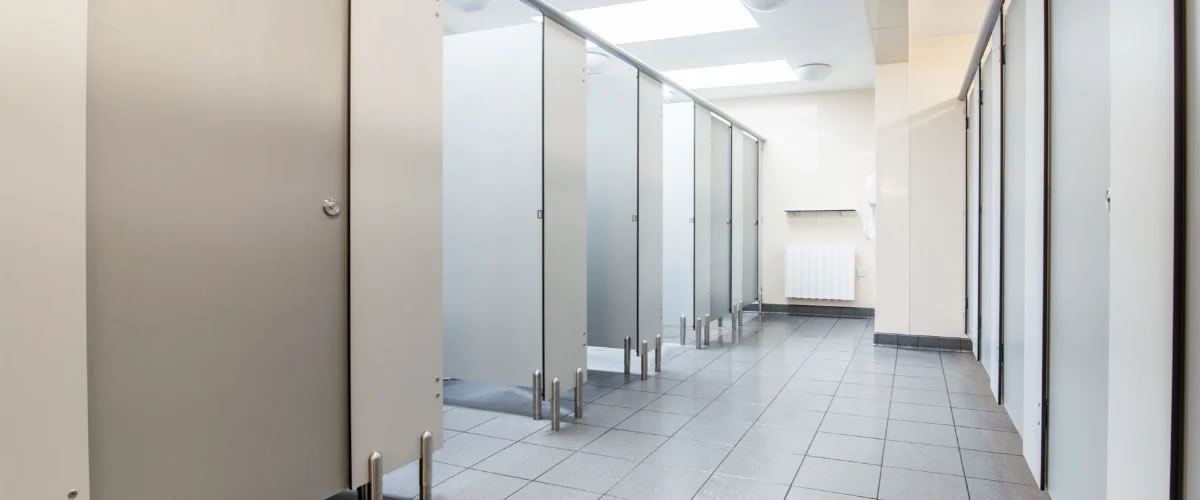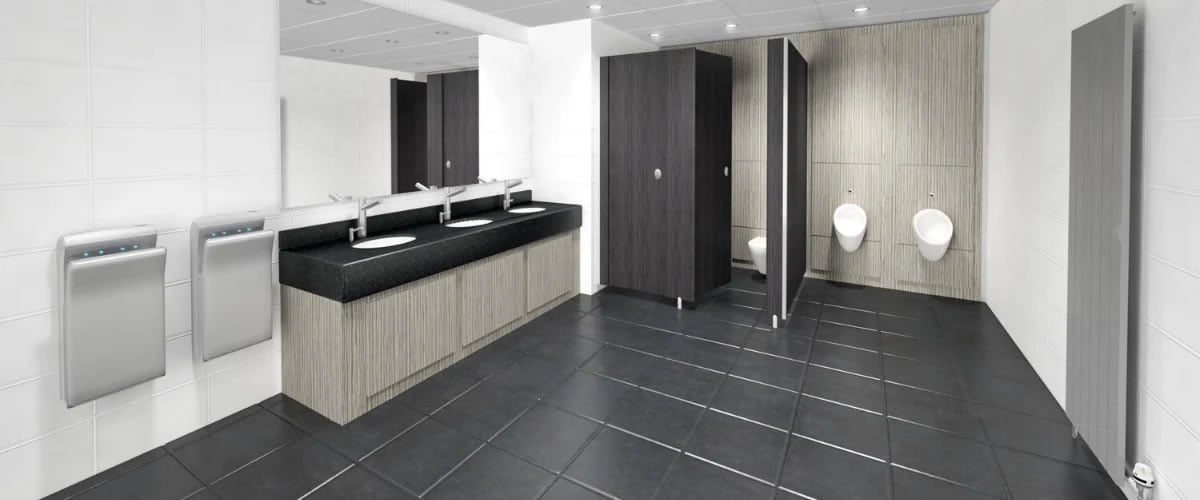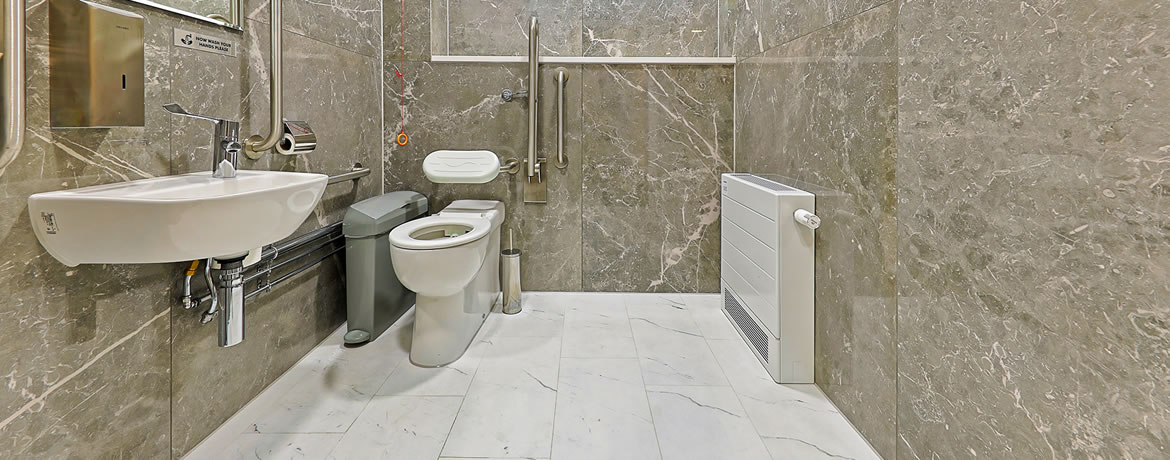Close Coupled Toilets
With close coupled toilets from leading manufacturers such as Armitage Shanks, Twyford, and Vitra, supplied either individually or in a pack including the cistern, toilet seat, and lid, we can supply a range of quality sanitaryware products from well-known brands to suit your needs.
Our products are priced and available to order through our website and can be delivered directly to you quickly and safely thanks to our large supplier network.
Options include push-button or lever flush cisterns as well as standard and soft-close toilet seats.
If you have any questions about our products, please feel free to contact our friendly sales team. You can also find more information about our products by visiting our blog, where you’ll find useful articles such as:
FAQs
What is a Close Coupled Toilet?
A close-coupled toilet has a ceramic cistern that sits on top of the back of the toilet pan. The cistern and toilet pan are separate items that, when connected, allow water to flow from the cistern and into the bowl without the need for additional pipework. The cistern is in full view to the user and usually is operated by a lever or push-button flushing mechanism. They can be installed within toilet cubicles, although usually project further into the washroom space compared to back-to-wall and wall-hung toilets with concealed cisterns.
How does a close-coupled toilet work?
Close-coupled toilets may vary in design, but generally, you can flush them via a button or a handle which is connected to the toilet cistern. Once flushed, water will flow straight from the cistern into the toilet bowl.
Why choose a close-coupled toilet?
Deciding on the right type of toilet can be tricky, but there are many benefits to having the popular close-coupled toilet in your bathroom, including:
-
They’re low cost - close-coupled toilets are often cheaper than toilets with concealed cisterns thanks to their simple design as there is no need to purchase additional IPS ducts or support frames.
-
They’re stylish - the ceramic cistern that accompanies a close-coupled toilet is usually an attractive unit that complements the shape of the toilet pan. They offer a more minimalist design compared to other toilets.
-
They’re more compact than other toilet unit options, making them a space-efficient choice for smaller bathrooms.
-
They’re versatile and can suit a number of washrooms in different sectors, including schools and offices.
-
They’re easy to install - here at Commercial Washrooms, we offer a supply and fit service to those looking to refurbish their bathrooms.
-
They can be water-efficient as many close-coupled toilets have dual flush control.
-
They’re easy to clean and maintain as their cisterns are within easy reach.
Learn more about the benefits of close-coupled toilets here.
What is a close-coupled toilet cistern?
A close-coupled toilet cistern is one which is attached to the toilet pan, so it is one single unit combining both parts. The cistern sits directly above the toilet pan rather than being located higher up (which is seen for more traditional high and low-level toilets).
Close-coupled toilet dimensions
The dimensions of a close-coupled toilet can vary depending on the make and model of the unit. That said, the standard seat height of these units is approximately 40cm (total height is about 80cm high), the width is also about 40cm and they can measure between 60 to 80cm in terms of depth.
Of course, the dimensions of children's toilets and close coupled disabled toilets will be different to this in order to accommodate the user’s needs.
Close coupled toilet vs back to wall toilet
There are different styles of toilets for you to choose from when refurbishing your washroom, and two of the most popular styles are the back-to-wall and close-coupled toilets. Below, we outline the key differences and benefits between the two.
|
Features |
Close coupled toilets |
Pros/cons |
Back-to-wall toilets |
Pros/cons |
|
Cistern |
The cistern is visible and located directly above the toilet pan. |
It’s easy to access their cistern, however, it is visible to users. |
The cistern is concealed, usually behind the wall or an IPS panel. |
It can be trickier to access the cistern, however, they offer a neat and contemporary style. |
|
Flush control |
This is usually found on the cistern itself (as a button or a handle). |
Easy to operate. |
They typically feature a flush panel on the wall. |
Easy to operate. Will need to install a flush panel/handle onto the wall. |
|
Pipework |
Concealed. |
Unsightly pipework is hidden from view. |
Concealed. |
Unsightly pipework is hidden from view. |
|
Size |
Approx. 80cm tall (including cistern height), 40cm wide and 60-80cm deep. |
As the cistern is above the toilet bowl, they’re taller than back-to-wall toilets. |
Approx. 40 cm tall, 40cm wide and 50-60cm deep. |
They’re more compact. |
Things to bear in mind when choosing your close-coupled toilet
Close-coupled toilets have a lot going for them, however, there could be things worth considering:
-
Although close-coupled cisterns can often include a tamper-proof lid, they can be subject to abuse in certain settings. The cistern lids can be lifted, and items concealed within.
-
The plumbing and pipework on display can be tampered with.
Colourful panels included with IPS Duct Panels will be manufactured to match toilet cubicles. This is often considered a more attractive finish.











